Abstract
There has been a lot of research exploring the phenomenon of statistics anxiety that is expected to be driven by various factors, including gender, age, inability to understand statistics concepts, mathematical capability, and others. It is argued that statistics anxiety adversely affects students’ performance, and there is a need to implement interventions that could help students lower their anxiety. The current study aims to determine the impact of statistics anxiety on academic performance of students. The data collected for this study comprises of views and results of 140 students. The primary research collects data on students’ demographics, academic performance, personality characteristics, and statistics anxiety. The univariate analysis showed that the anxiety of students reduced at the end of the course. The correlation analysis found significant relationships between total module marks and change in anxiety, A-level maths, and attendance. No personal characteristic has a significant impact on statistics anxiety. However, extraversion and agreeableness have significant effects on total module marks.
Introduction
Macher, Papousek, Ruggeri, and Paechte (2015) explain statistical anxiety as the situation where individuals feel pressurized when exposed to statistics information, methods, and instructions. It is indicated that students experience a high level of anxiety when they have to take the statistics course and face problems following the curriculum. The inclusion of statistics in different courses such as psychology, mathematics, and finance has increased their problems. It also affects their academic performance, and they are demotivated. Macher et al. (2015) critically discussed the findings of previous studies and highlighted that statistics anxiety is found to have varying effects on the academic performance of students. Moreover, it is suggested that statistics anxiety make students spend more time preparing for their assignments and exams, which is beneficial to them. Paechter, Macher, Martskvishvili, Wimmer, and Papousek (2017) also indicated that statistics anxiety indirectly and negatively affects the academic performance of students as they are found to experience increased levels of tension and anxiety in the statistics course and exam. Similarly, Siew, McCartney, and Vitevitch (2019) state that the indirect effects of statistics anxiety on students’ performance. The researchers highlighted that it is an incorrect perception that students need to have strong mathematical skills to perform well in the statistics course. They need effective support and teaching in classrooms to develop a clear understanding of statistical concepts and methods. Primi, Donati, and Chiesi (2018), Morsanyi et al. (2016)
and Bourne (2018) also found that there are cognitive factors such as willingness to learn, and the ability to follow instructions also affect the level of statistics anxiety experienced by students. The researchers also indicated that students with strong mathematical skills are expected to perform better in statistics.
Based on the review of previous studies, it could be indicated that the phenomenon of statistics anxiety needs further research that could help in devising in-classroom interventions for assisting students to overcome stress. Therefore, the current study is another attempt to explore this issue by analyzing the data collected from another source. The present study aims to investigate the impact of statistics anxiety on the academic performance of students enrolled in a statistics course. The three research questions set out for analysis and discussion are given below:
- RQ1: Does statistic anxiety affect the academic performance of students enrolled in a statistics course?
- RQ2: Which personality traits significantly affect the academic performance of students enrolled in a statistics course?
- RQ3: Which personality traits significantly affect the statistics anxiety of students enrolled in a statistics course?
These research questions are addressed in the discussion part of this report based on the results of the statistical tests performed in this study. The current study follows a deductive approach that draws a hypothesis from the review of the existing literature related to statistics anxiety and tests it based on the results of the tests performed in this report. The hypothesis set out to validate in this study is, “Anxiety about statistics is related to academic performance on an undergraduate statistics course.” This hypothesis is tested explicitly based on the results of the independent samples t-test correlation matrix and regression analysis.
Method
Design
The study performed in this report use the quantitative research methodology to collect numerical data and then analysing it using statistical techniques. The research design is cross-sectional as the data of students is collected at two different points in time.
Participants
A survey of 140 students was carried out, who were enrolled in the statistics course. Their views were collected in two sessions, i.e., before and after the completion of the course.
Materials
A questionnaire designed and used to collect data of 140 students, including their demographics (age, gender, A-level Maths, and attendance). Furthermore, the survey collects views of students about their personality based on the Ten Item Personality Inventory (TIPI), and averages of their responses are calculated to determine the scores of five dimensions including TIPI Extraversion, TIPI Agreeableness, TIPI Conscientiousness, TIPI Emotional Stability, and TIPI Openness to Experiences. Furthermore, statistics anxiety is measured before the start of the statistics course and after its completion based on the Anxiety with Statistics Scale (iBSc students, 2014) and
Procedures
The ASS scores of students before and after the course were calculated by recoding responses to a positive statement about comfortability to apply statistical knowledge and summing their response values for determining two variables, including ASSBase (Before) and ASSFollow (After). The change in statistical anxiety is calculated as a difference between ASSFollow and ASSBase values. The missing values of ASSFollow are coded -1 and are excluded from the analysis performed in this report. Moreover, the data of ASSBase and ASSFollow were grouped as 1 and 2, respectively, for carrying out the independent samples t-test. The confidence level assumed for testing the significance of the difference in mean values and also that of coefficients of the slope is 95%.
Statistical Analysis Plan
The analysis initiates with the calculation of descriptive statistics, including frequencies and other statistics such as mean, standard deviation, minimum, and maximum values of different variables based on their types. The results are summarized and also provided in appendices. The independent samples t-test is a univariate test to compare the score of individuals based on the Anxiety with Statistics Scale (ASS) at the beginning and end of the statistics course (Reinhart, 2015). The correlation matrix is constructed to determine the correlations between Score (Total Module Mark), ASSChange (ASSFPost– ASSBase), Attend (Attendance), and A-level Maths (George & Mallery, 2016).
In this analysis, two regressions have been performed. In the first regression, the dependent variable is the change in the ASS score, which is calculated the difference in the ASS scores at the base and after the completion of the assessment. On the other hand, Score is the dependent variable in the second regression model. The independent variables are the Ten Item Personality Inventory (TIPI), Age, and Gender of 140 students (Darlington & Hayes, 2017). All missing values are excluded from the analysis, and the normal distribution of data of variables (Abbott, 2017), which is a necessary assumption of the regression analysis, is also assessed by histograms provided in Appendix D.
Results
Descriptive Analysis
The data of 140 students was collected based on TIPI and ASS scales. The analysis also indicates the highest number of respondents were aged 22 years. There were 121 females in the sample. Moreover, 93 students had A-level Maths experience. Most of the respondents had a high attendance frequency of 10. These results, along with their graphical depiction, are provided in Appendix A. Table 1 indicates that the mean value of ASS before the course was 30.0643, whereas it decreased to 25.3509 at the end of the course, which shows that there was a decrease of 4.7134. It is noted that post-course estimates of anxiety had 26 missing values.
Table 1. ASS Before and After.
Furthermore, the personality characteristics assessment based on TIPP indicates that the mean value of all measures was more than 5, as shown in the table attached in Appendix B.
Inferential Analysis
The results of the independent samples t-test are summarized in the following table, and its detailed outcomes are provided in Appendix C.
Table 3. t-test.
It is noted that the mean difference between ASS before and after the course is negative. The difference was also found to be significant at 95% confidence level.
The results of the correlation matrix are summarized in the following table, and the detailed matrix is provided in Appendix E.
Table 4. Correlation.
It is seen that the correlation of Score is negative with ASSChange. It implies that students’ scores increase when they experience less anxiety. Furthermore, students with A-level Maths background and higher attendance achieve higher scores in the module. The strongest correlation is between Score and Attend. Moreover, the correlations of all three independent variables are found to be significant at the 0.05 level. There is no significant correlation between independent variables, which eliminates the issue of multicollinearity as required by the regression analysis.
The results of the regression models are provided in Appendix F and are summarized in the following.
Table 5. Regression.
The first regression model results show that the goodness of fit measured by R-square is weak, and the F-statistics is also not significant. It implies that the outcome of this analysis is not reliable to make definite conclusions about the relationships between variables. The coefficient of TIPI Extraversion and TIPI Agreeableness are found to be positive and insignificant as their p-value is not less than the alpha value. On the other hand, TIPI Conscientiousness, TIPI Emotional Stability, TIPI Openness to Experiences, Age, and Gender have negative coefficients which are insignificant as well. The second regression model results show that the goodness of fit measured by R-square is also weak. However, F-statistics is significant, which implies that the outcome of this analysis is reliable to make definite conclusions about the relationships between variables. The coefficient of TIPI Extraversion, TIPI Emotional Stability, and TIPI Openness to Experiences are found to be negative. However, the coefficient of TIPI Extraversion is significant as its p-value is less than 0.05. The results imply that introvert students and those who are emotionally more stable and open to experiences have lower scores. On the other hand, TIPI Agreeableness, TIPI Conscientiousness, Age, and Gender have positive coefficients. The coefficient of TIPI Agreeableness is significant as its p-value is less than 0.05.
Discussion
The analysis provided in this report focuses on determining the impact of statistics anxiety on academic performance of students. The mean value of statistics anxiety measured by the Anxiety with Statistics Scale was higher before the start of the course than after it. The results of the independent samples t-test show that students experience a higher level of anxiety at the start of the statistics course than after completing it, and this difference was found to impact their behaviour significantly. The possible explanations of this behaviour have also been discussed in previous studies, including Macher et al. (2015), Morsanyi et al. (2016), Bourne (2018), and Primi, Donati, and Chiesi (2018). Based on this analysis, it is clear that students were tensed before the start of this course, which implies that students’ statistics anxiety declined upon completion of the course.
Moreover, the correlation analysis showed that the Pearson Correlation of Total Module Score with the change in anxiety with statistics was negative and significant and that with A-level Maths education and attendance during the course was found to be positive and significant. This implies that students who manage to control or overcome their anxiety with statistics achieve higher marks as compared to those who feared this subject and were unable to form a good understanding of statistical methods and techniques. The results also imply that students who had taken Maths at A-level were in a better position, and they were able to score higher marks. Furthermore, the correlation between A-level Maths and change in anxiety with statistics is found to be negative, which implies that such students do not fear the subject, and this is the reason that they are able to grasp statistical knowledge quickly and effectively to score higher marks.
The correlation analysis also indicates that students who attend statistics course classes regularly scored more than those who skip classes. This helps them in gaining a better understanding of statistical concepts and overcome their anxiety. It is also noted that there is a negative correlation between Attend and AssChange, which is a measure of the difference between anxiety levels at the start and end of the course. It implies that those students who make an effort to attend statistics course classes are likely to overcome their fear and stress, which helps them perform in a better way. The results of the correlation analysis validate the research hypothesis, which states that anxiety about statistics is related to academic performance on an undergraduate statistics course based on the significant correlation found between them. It can also be inferred that statistic anxiety affects the academic performance of students enrolled in a statistics course.
The next two research questions are addressed based on the results of both regression models. It is noted that the two personality traits, including extraversion and agreeableness, have a positive relationship with the change in statistics anxiety. This means that students who are extroverted and show agreeableness have higher statistics anxiety at the end of the course. Moreover, it is noted that students who have conscientiousness, emotional stability, and openness to experiences experience a decline in their anxiety by the end of the course. However, no personality characteristics significantly affect the change in statistics anxiety. Finally, females and students of higher age are expected to have lower statistics anxiety.
The results of the second regression show that extraversion and agreeableness significantly affect the academic performance of students enrolled in a statistics course. It also implies that introvert students and those who are emotionally more stable and open to experiences have lower total module marks. The results show that students who exhibit more agreeableness and conscientiousness score higher than others. Moreover, students of higher age and female gender have better scores.
References
Abbott, M. L. (2017). Using statistics in the social and health sciences with SPSS and Excel. Hoboken, NJ: John Wiley & Sons.
Bourne, V. J. (2018). Exploring statistics anxiety: Contrasting mathematical, academic performance and trait psychological predictors. Psychology Teaching Review, 24(1), 35-43.
Darlington, R. B., & Hayes, A. F. (2017). Regression analysis and linear models: Concepts, applications, and implementation. New York, NY: Guilford Publications.
George, D., & Mallery, P. (2016). IBM SPSS Statistics 23 step by step: A simple guide and reference. New York, NY: Routledge.
iBSc students. (2014). Anxiety with statistics scale. Unpublished.
Macher, D., Papousek, I., Ruggeri, K., & Paechter, M. (2015). Statistics anxiety and performance: Blessings in disguise. (C. Primi, Ed.) Frontiers in Psychology, 5(1116), 1-4.
Morsanyi, K., Mammarella, I. C., Szücs, D., Tomasetto, C., Primi, C., & Maloney, E. A. (2016). Mathematical and statistics anxiety: Educational, social, developmental and cognitive perspectives. Frontiers in Psychology, 7(1083), 1-4.
Paechter, M., Macher, D., Martskvishvili, K., Wimmer, S., & Papousek, I. (2017). Mathematics anxiety and statistics anxiety. Shared but also unshared components and antagonistic contributions to performance in statistics. (J. De La Fuente, Ed.) Frontiers in Psychology, 8(1196), 1-13.
Primi, C., Donati, M., & Chiesi, F. (2018). The role of statistics anxiety in learning probability. In C. Batanero, & E. Chernoff, Teaching and learning stochastics. ICME-13 Monographs (pp. 145-157). Cham, Switzerland: Springer.
Reinhart, A. (2015). Statistics done wrong: The woefully complete guide. San Francisco, CA: No Starch Press.
Siew, C. S., McCartney, M. J., & Vitevitch, M. S. (2019). Using network science to understand statistics anxiety among college students. Scholarship of Teaching and Learning in Psychology, 5(1), 75-89.
Appendix A
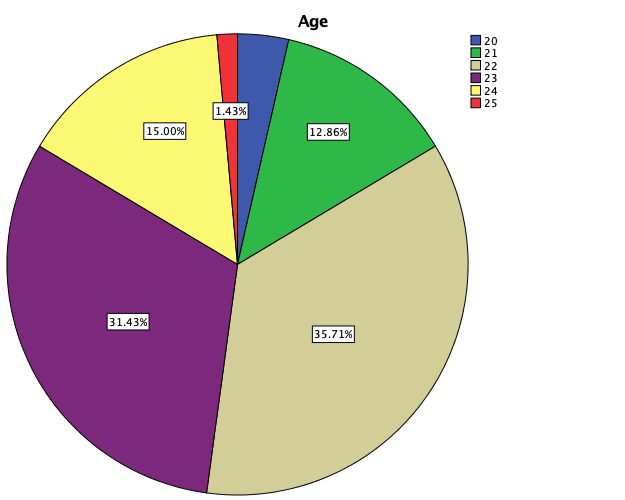
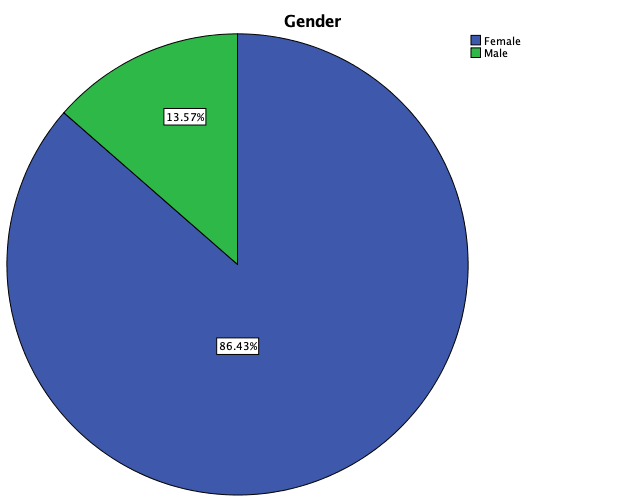
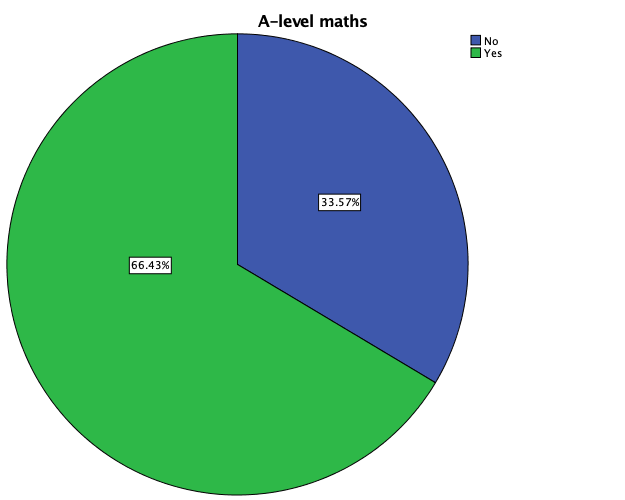

Appendix B
Appendix C
Group Statistics
Independent Samples Test
Appendix D

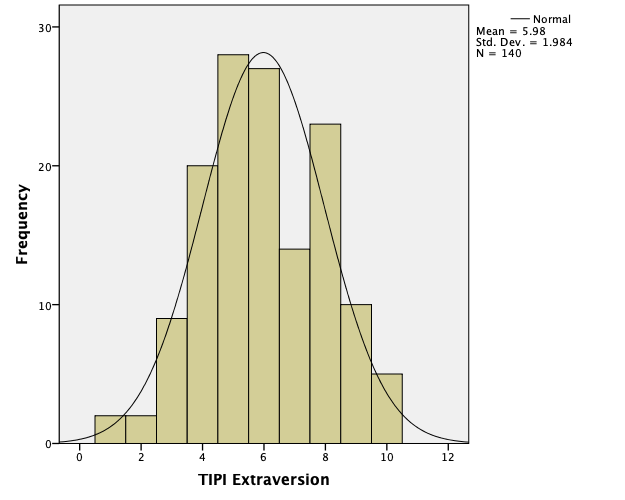

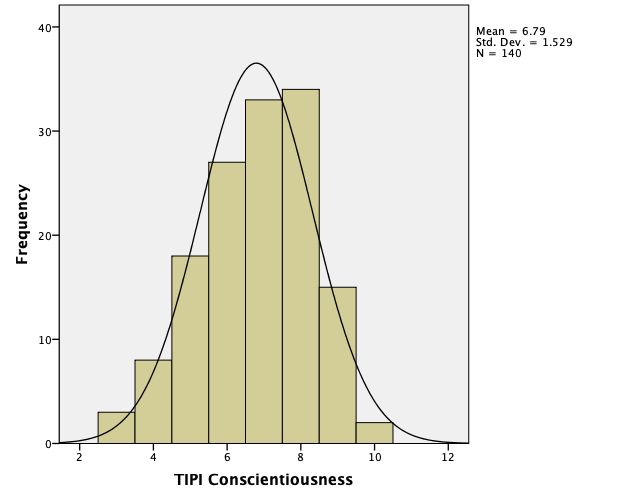
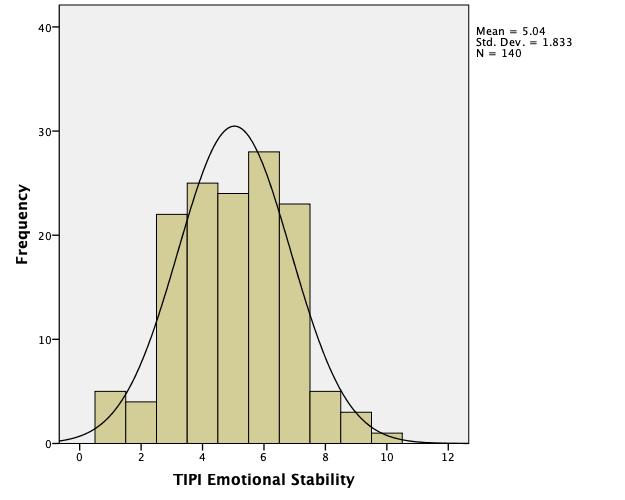
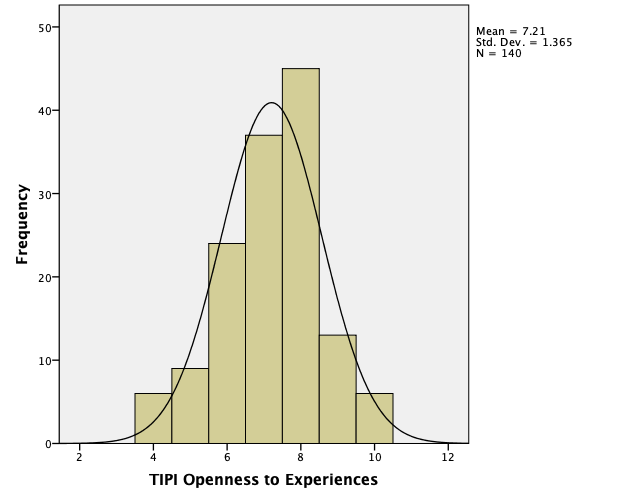

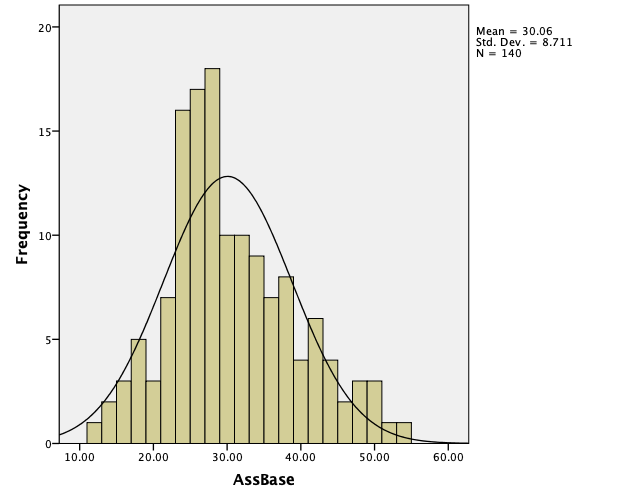
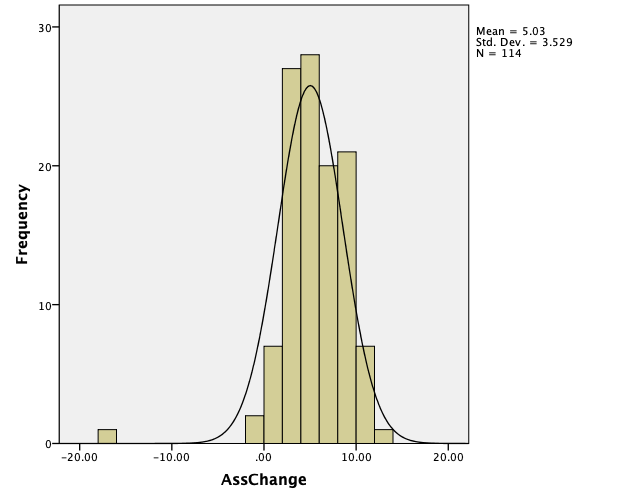
Appendix E
Appendix F
First Regression
ANOVAa
Coefficientsa
Second Regression
ANOVAa
Coefficientsa